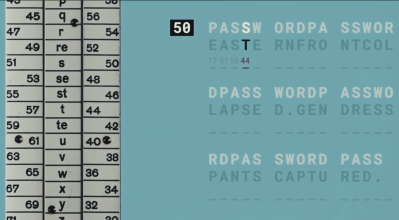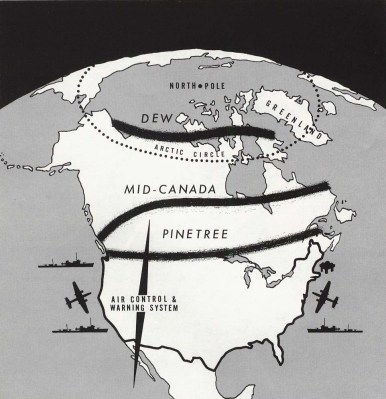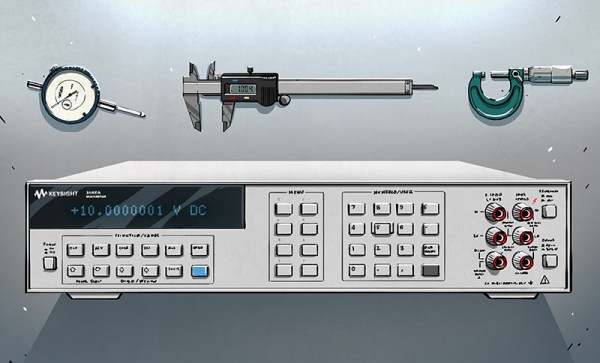We always enjoy [History Guy]’s musing on all things history, but we especially like it when his historical stories intersect with technology. A good example was his recent video about a small secret group during the Second World War that deployed to the European Theater of Operations, carrying out secret missions. How is that technology related? The group was largely made of scientists. In particular, the team of nineteen consisted of a geographer and an engineer. Many of the others were either fluent in some language or had been through “spy” training at the secret Military Intelligence Training Center at Camp Ritchie, Maryland. Their mission: survey Europe.
history147 Articles
Batteries Not Included: Meet The Swiss Réglette!
Over on YouTube, [The Modern Rogue] created an interesting video showing a slide-rule-like encryption device called the Réglette. This was a hardware implementation of a Vigenère-like Cipher, technically referred to as a manual polyalphabetic substitution cipher. The device requires no batteries, is fully waterproof, daylight readable and easy to pack, making it really useful if you find yourself in a muddy trench in the middle of winter during a world war. Obviously, because it’s a slide rule.
Anyway, so how does this cipher work? Well, the ‘polyalphabetic’ bit infers the need for a key phrase, which is indeed the first thing all parties need to agree upon. Secondly, a number is required as a reference point. As you can see from the video, the sliding part of the device has letters of the alphabet, as well as numbers and a special symbol. The body has two series of numbers, with the same spacing as the central, sliding part. A second copy of the sliding part is also needed to slide in behind the first unit. This second copy is neatly stowed below the body during storage.

The cipher works by first aligning the starting letter of the (variable-length) key phrase with the reference number. Next, encode the first symbol from the cleartext message (the thing you want to encrypt). You simply look up the letter on the slide and read off either of the numbers next to it. Randomly selecting the left or right set adds an extra bit of strength to the code due to increased entropy. The number is the first symbol for your ciphertext (the thing you want to transmit to the receiver). Next, you move on to the next symbol in the cleartext message. Align the following letter of the key phrase with the reference number, look up the corresponding letter in the message, and transmit the following number onwards. When you run out of key phrase letters, you loop back to the start, and the cycle repeats.
The special symbol we mentioned earlier is not really a ‘blank’; it is a control symbol used to retransmit a new reference number with the existing setup. To change the reference number, the blank character is encoded and sent, followed by the latest reference number. When the blank symbol is received at the other end, the following code is used as the reference number, and the key phrase position is reset to point back to the first letter, restarting the cycle anew. Simple, yes. Effective? Well, not really by modern standards, but at the time of limited computing power (i.e. pen and paper, perhaps a mechanical calculator at best), it would have been sufficient for some uses for a couple of decades.
Why is this Vigenère-like? Well, an actual Vigenère cipher maps letters to other letters, but the Réglette uses numbers, randomly selected, adding entropy, as well as the control code to allow changing the cypher parameter mid-message. This makes it harder to attack; the original Vigenère was considered first-rate cryptography for centuries.
If you’d like to play along at home and learn some other simple ciphers, check this out. Kings and Queens of old frequently used cryptography, including the famous Queen Mary of Scots. Of course, we simply can’t close out an article on cryptography without mentioning the Enigma machine. Here’s one built out of Meccano!
Continue reading “Batteries Not Included: Meet The Swiss Réglette!”
Ask Hackaday: Why Is TTL 5 Volts?
The familiar five volts standard from back in the TTL days always struck me as odd. Back when I was just a poor kid trying to cobble together my first circuits from the Forrest Mims Engineer’s Notebook, TTL was always a problem. That narrow 4.75 V to 5.25 V spec for Vcc was hard to hit, thanks to being too poor to buy or build a dedicated 5 V power supply. Yes, I could have wired up four 1.5 V dry cells and used a series diode to drop it down into range, but that was awkward and went through batteries pretty fast once you got past more than a few chips.
As a hobbyist, the five volt TTL standard always seemed a little capricious, but I strongly suspected there had to be a solid reason behind it. To get some insights into the engineering rationale, I did what anyone living in the future would do: I asked ChatGPT. My question was simple: “How did five volts become the standard voltage for TTL logic chips?” And while overall the answers were plausible, like every other time I use the chatbot, they left me wanting more.
Two Decades Of Hackaday In Words
I think most of us who make or build things have a thing we are known for making. Where it’s football robots, radios, guitars, cameras, or inflatable textile sculptures, we all have the thing we do. For me that’s over the years been various things but has recently been camera hacking, however there’s another thing I do that’s not so obvious. For the last twenty years, I’ve been interested in computational language analysis. There’s so much that a large body of text can reveal without a single piece of AI being involved, and in pursuing that I’ve created for myself a succession of corpus analysis engines. This month I’ve finally been allowed to try one of them with a corpus of Hackaday articles, and while it’s been a significant amount of work getting everything shipshape, I can now analyse our world over the last couple of decades.
The Burning Question You All Want Answered

A corpus engine is not clever in its own right, instead it will simply give you straightforward statistics in return for the queries you give it. But the thing that keeps me coming back for more is that those answers can sometimes surprise you. In short, it’s a machine for telling you things you didn’t know. To start off, it’s time to settle a Hackaday trope of many years’ standing. Do we write too much about Arduino projects? Into the engine goes “arduino”, and for comparison also “raspberry”, for the Raspberry Pi.
What comes out is a potted history of experimenter’s development boards, with the graph showing the launch date and subsequent popularity of each. We’re guessing that the Hackaday Arduino trope has its origins in 2011 when the Italian board peaked, while we see a succession of peaks following the launch of the Pi in 2012. I think we are seeing renewals of interest after the launch of the Pi 3 and Pi 4, respectively. Perhaps the most interesting part of the graph comes on the right as we see both boards tail off after 2020, and if I had to hazard a guess as to why I would cite the rise of the many cheap dev boards from China.
Thanks, Tamiya-san
We’re saddened to report the passing of Shunsaku Tamiya, the man behind the Tamiya line of models. What was surprising about this, though, is how many of our readers and writers alike felt touched by the Tamiya model company. I mean, they made great models, and they’re definitely a quality outfit, but the outpouring of fond memories across a broad spectrum was striking.
For example, we originally ran the story as breaking news, but our art director Joe Kim spent a good part of his childhood putting together Tamiya kits, and felt like he absolutely had to do a portrait of Mr. Tamiya to pay his respects. I presume Joe is more on the painting-the-models end of the spectrum of Tamiya customers, given his artistic bent. Jenny’s writeup is absolutely touching, and her fond remembrances of the kits shines through her writing.
 Myself, I’m on the making-small-robots end of the spectrum, and was equally well served. Back in the early ’90s, the “twin motor gearbox” was a moderately challenging and tremendously rewarding build for me, but it was also the only variable-ratio small motor gearbox that we had easy access to for making small bots to run around the living room.
Myself, I’m on the making-small-robots end of the spectrum, and was equally well served. Back in the early ’90s, the “twin motor gearbox” was a moderately challenging and tremendously rewarding build for me, but it was also the only variable-ratio small motor gearbox that we had easy access to for making small bots to run around the living room.
Indeed, the Tamiya line included a whole series of educational models and components that were just perfect for the budding robot builder. I’m sure I have a set of their tank treads or a slip clutch in a box somewhere, even today.
It’s nice to think of how many people’s lives were touched by their kits, and to get even a small glimpse of that, you just need to read our comment section. We hope the company holds on to Mr. Tamiya’s love for quality kits that inspire future generations, whether they end up becoming artists, engineers, or simply hackers.
The DEW Line Remembered

If you grew up in the middle of the Cold War, you probably remember hearing about the Distant Early Warning line between duck-and-cover drills. The United States and Canada built the DEW line radar stations throughout the Arctic to detect potential attacks from the other side of the globe.
MIT’s Lincoln Lab proposed the DEW Line in 1952, and the plan was ambitious. In order to spot bombers crossing over the Arctic circle in time, it required radar twice as powerful as the best radar of the day. It also needed communications systems that were 99 percent reliable, even in the face of terrestrial and solar weather.
In the end, there were 33 stations built from Alaska to Greenland in an astonishing 32 months. Keep in mind that these stations were located in a very inhospitable environment, where temperatures reached down to -60 °F (-51 °C). Operators kept the stations running 24/7 for 36 years, from 1957 to 1993.
System of Systems
The DEW line wasn’t the only radar early-warning system that the US and Canada had in place, only the most ambitious. The Pinetree Line was first activated in 1951. However, its simple radar was prone to jamming and couldn’t pick up things close to the ground. It was also too close to main cities along the border to offer them much protection. Even so, the 33 major stations, along with six smaller stations, did better than expected. Continue reading “The DEW Line Remembered”
Simulating Empires With Procedurally Generated History
Procedural generation is a big part of game design these days. Usually you generate your map, and [Fractal Philosophy] has decided to go one step further: using a procedurally-generated world from an older video, he is procedurally generating history by simulating the rise and fall of empires on that map in a video embedded below.
Now, lacking a proper theory of Psychohistory, [Fractal Philosophy] has chosen to go with what he admits is the simplest model he could find, one centered on the concept of “solidarity” and based on the work of [Peter Turchin], a Russian-American thinker. “Solidarity” in the population holds the Empire together; external pressures increase it, and internal pressures decrease it. This leads to an obvious cellular automation type system (like Conway’s Game of Life), where cells are evaluated based on their nearest neighbors: the number of nearest neighbors in the empire goes into a function that gives the probability of increasing or decreasing the solidarity score each “turn”. (Probability, in order to preserve some randomness.) The “strength” of the Empire is given by the sum of the solidarity scores in every cell. Continue reading “Simulating Empires With Procedurally Generated History”

















